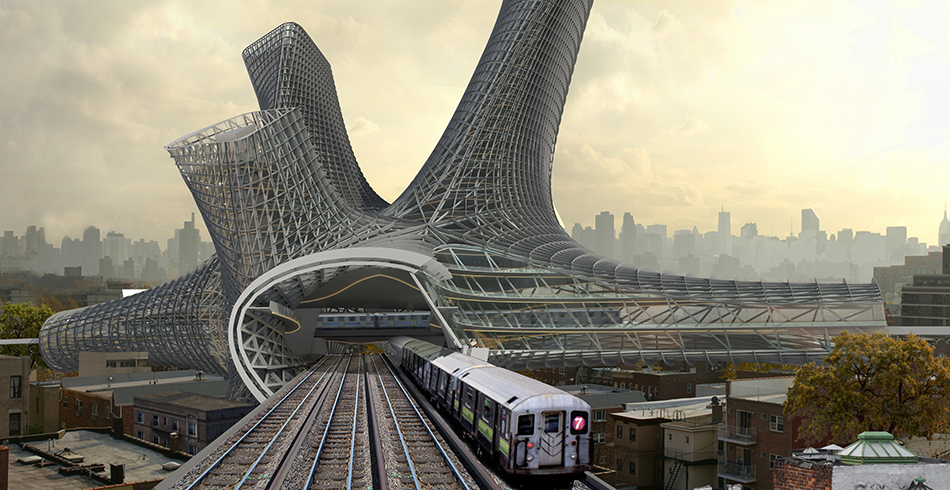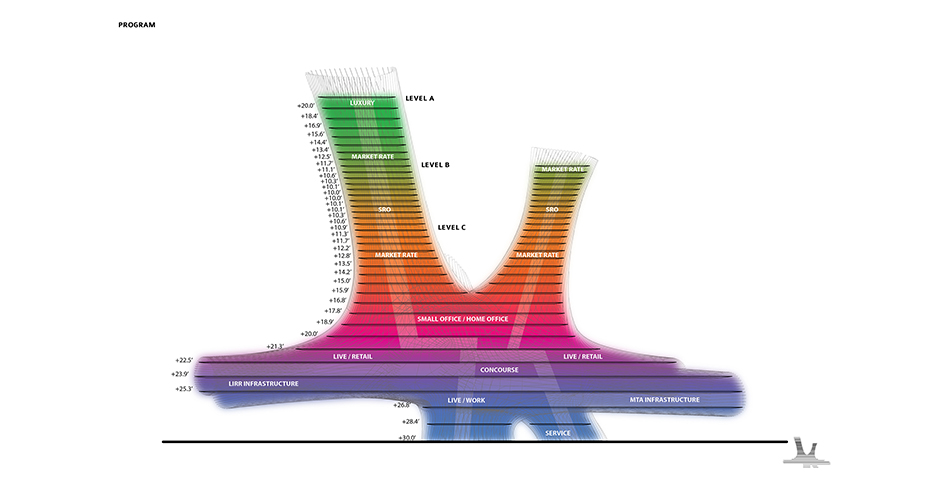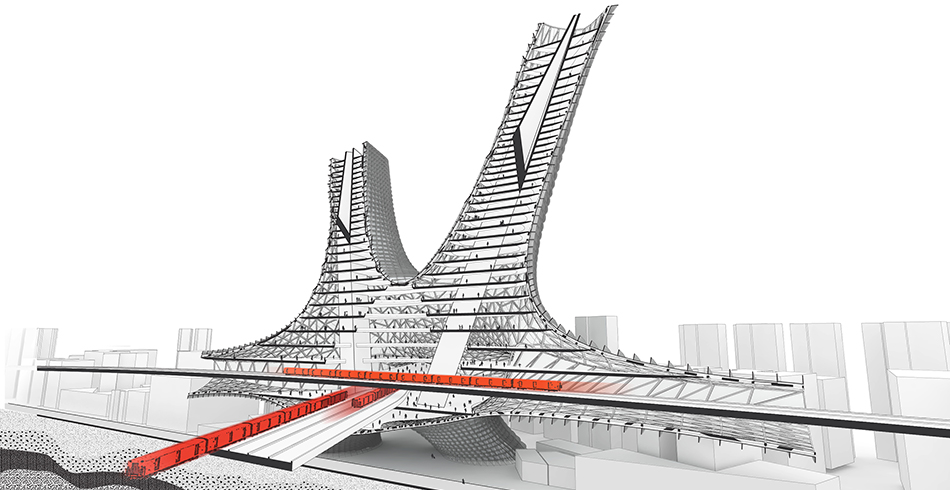Living Cities Competition
We were surprised and honored to win the Metropolis Magazine Living Cities Tower Competition earlier this year. Though we completed this project outside the context of the office, we benefited from EHDD’s longstanding tradition of fostering young designers and encouraging creative exploration.
The unrestricted format of the ideas competition hosted by Metropolis Magazine was a great complement to the rigor of designing buildings at EHDD. Our concept and design, The Urban Alloy Towers ascribes to a different aesthetic language than the projects that we typically work on at the firm; however, the core ideals of creating a collectively greater future for our clients, society, and the environment – is at the essence of our work in both contexts. The Urban Alloy Towers centered around three key ideas: repair of urban fabric around the rifts created by mass transportation infrastructure, the creation of the neighborhood with in a building that strengthens the social ties of its inhabitants and optimized building systems that optimizes the solar performance of a complex form.
Our main concepts for Urban Alloy included:
Urban Concept: The most dynamic cities of the 21st century, such as New York, are anthropomorphic alloys that act as engines for innovation and social cohesion. These cities, with their continually evolving demographics, will forge the dynamic societies of the future. With the rapid rise of near instantaneous communication, a city’s livability has gained prominence as an attractor for top minds. In order to secure its future as the leading global center, New York needs to continue to grow in smart ways. We see the opportunity to draw the energy of Manhattan out into the four other boroughs without disrupting existing land use. Urban Alloy proposes a residential typology rooted in the remnant spaces surrounding the intersection of transportation infrastructure, such as elevated train lines and freeway interchanges. With the proposed design and specified materials, we aimed to optimize a heterogeneous and highly linked set of living environments capturing the air rights above these systems.
Living Concept: The combination of escalating land prices and the acceleration of city migration have made urban renewal based modes of densification unfit for the contemporary city. Urban Alloy is the symbiotic re-purposing of the air rights above transportation corridors in New York. Urbanist’s have long touted the benefits of greater housing density near public transportation hubs; Urban Alloy proposes the advancement of this idea by locating the system directly on the intersections between surface and elevated train lines. We chose the intersection of the LIRR and the 7 train as a test case. The paradigm of one size fits all is obsolete. Urban citizens want diverse living situations where they can work, play, eat and rest within a pedestrian zone. As technology creates the market desire and a conditioning for personalization, society is more willing to pay a premium for spaces that are tailored to their particular needs. (See Program Diagram describing the wide range of living options.)
Skin Concept: The wide range of programmatic options inspired a blend of floor plate geometries that transition from cylindrical to triangular from the base to the top of each tower. This blend, along with constraints instilled from the site, generates a complex geometry that requires a new facade optimization paradigm. A composite or alloy of multiple flexible systems is required to optimize a skin in which every point has a unique environmental exposure. The system is deployed on a grid that follows the geometric directionality of the surface. At each intersection of the grid, the normal of the surface is analyzed against its optimal solar shading and daylight transmitting requirements. An authored algorithm then generates vertical and horizontal fin profiles that blend with the profiles at adjacent nodes. The result is an optimized system of decorative metal fins that are unique to each specific solar orientation. Based upon the tenants of current solar facade design, the algorithm utilizes deep horizontal fins along southern exposure, and deeper vertical fins along east and west facing surfaces. This system generates specific fin depth and orientation for every point on the surface.
This competition was a chance to explore ideas for the future of architecture and its rule in shaping the city. In the next hundred years we think that architecture will be both more sensitive to its context and more formally imaginative, because designers will invent new building types by linking efforts to optimize programmatic and environmental considerations.




